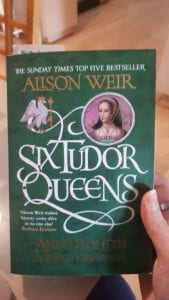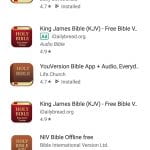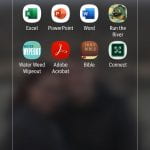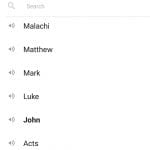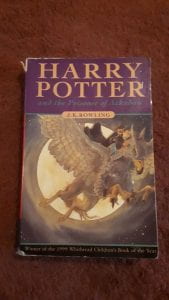Digital environments are around us, regardless of our personal opinion of them. As classroom teachers and/or teacher librarians, we need to be aware of them and how they can impact our students. Digital environments encompass e-books, audiobooks and much more. The literature that is within these environments can involve graphics (both still images and videos), audio, as well as text and interactive user faces.
We – as classroom teachers and teacher-librarians – need to remember that the students we have a “digital natives”, and some concepts that are familiar to us are foreign to the students we teach (Module One blog post). At the same time, many concepts that our students are familiar with are foreign to us as teachers. We can learn a lot from each other about where the digital environments and literature started and where it has come to now.
There tends to be an expectation that all schools are equal when it comes to how ‘digital ready’ they are when catering for their students; however, this isn’t the case. Some schools don’t have the facilities to accommodate for the students fully and also they may not have the knowledge of how to integrate the digital technology and literature into the curriculum. Accessibility has become a problem for many schools and students; firstly the infrastructure cannot keep up with the technological advancements and secondly, the students may not be able to afford new (or even second hand) devices. Having said that, generally, digital texts (in all of their varying forms) are easier to store in comparison to print ones (Felvegi and Matthew, 2012, p. 40), but one needs to keep in mind the amount of storage needed for especially large digital texts.
Many classroom teachers or teacher-librarians still see digital environments and literature as ‘research only’ or for ‘free-time use’ only. This creates problems with trying to make them a more embedded part of the curriculum and everyday classes. I mentioned in the Module Two blog post that we cannot think of digital technologies as a tool to keep students occupied for five-ten minutes. We need to be able to use the digital technologies and literature to inform and enhance the learning already occurring, rather than detract from it. This can assist in students becoming active participants of the curriculum rather than just passive consumers.
One aspect we can really thrive with (both within the classroom and the library) is the use of platforms such as Goodreads and Twitter. This platform allows for interaction between fans of the text around the world; as well as between the author of the text and the fans. This interaction can help to increase the understanding of the text and to help gain more knowledge, as mentioned in the Module 3 blog post. Many students are also using other platforms such as Instagram and YouTube to share their experiences with different digital technologies and literature. They are also using these platforms to share their stories and their life experiences (see Module 4 blog post for further elaboration). These different tools can open dialogue and enable students to be more digitally literate and more involved within the curriculum and each other. We need to be able to understand the environment that our students live in to be able to understand them.
Many of the digital environments allow for greater authorship and ownership of a piece of work; as well as a larger and easier way to collaborate. Much of this collaboration can now occur in real-time which makes group assignments and the like much easier. However, with this ease of authorship and collaboration, we now reach the area of copyright and how we as classroom teachers and teacher-librarians manage it. Do we have a three or single strike policy or do we have a blanket “you plagiarize, you fail” policy? How do we cope with and understand where our students are getting their sources from? These questions can only be answered on a school-by-school basis and in collaboration with the school leadership team. However, it can be a chance for the teacher librarian to show their knowledge and leadership qualities and suggest any appropriate resolutions (Module Six blog post).
Overall, the landscape that classroom teachers and teacher-librarians inhabit has changed dramatically and quite quickly. It is up to us to adapt to it and to bring our expertise to the school and the library. We need to be able to understand the digital technologies and the literature that our students are engaging with and we need to be able to do this in order to keep up with our students.
References
Flevegi, E. & Matthew, K.I. (2012). eBooks and literacy in K-12 schools, Computers in the schools, 29(1-2), 40-52. DOI: 10.1080/07380569.2012.651421
Mickan, N. (2019). INF533 – Module 6 [Blog]. Retrieved from https://thinkspace.csu.edu.au/nikitamickan/2019/10/05/inf533-module-6/
Mickan, N. (2019). INF533 – Module 2 [Blog]. Retrieved from https://thinkspace.csu.edu.au/nikitamickan/2019/08/10/inf533-module-2/
Mickan, N. (2019). INF533 – Module 3 [Blog]. Retrieved from https://thinkspace.csu.edu.au/nikitamickan/2019/09/18/inf533-module-3/
Mickan, N. (2019). INF533 – Module 4 [Blog]. Retrieved from https://thinkspace.csu.edu.au/nikitamickan/2019/09/18/inf533-module-4/
Mickan, N. (2019). INF533 – Module 1 [Blog]. Retrieved from https://thinkspace.csu.edu.au/nikitamickan/2019/08/10/inf533-module-1/
Word count: 772 words

